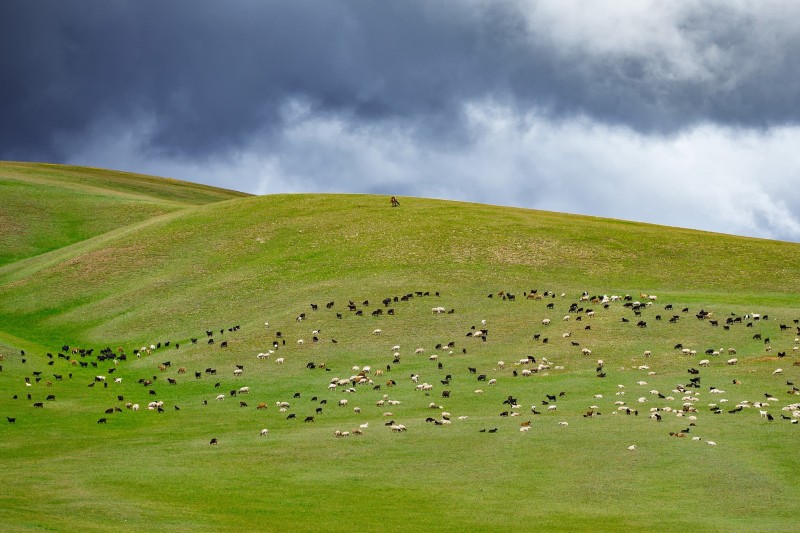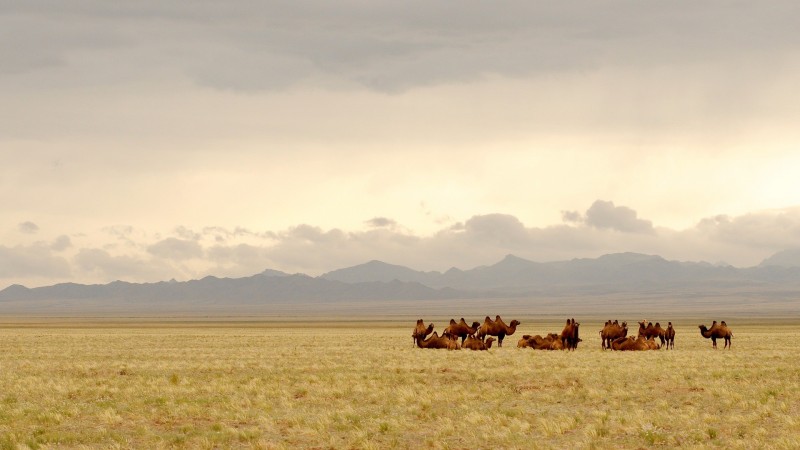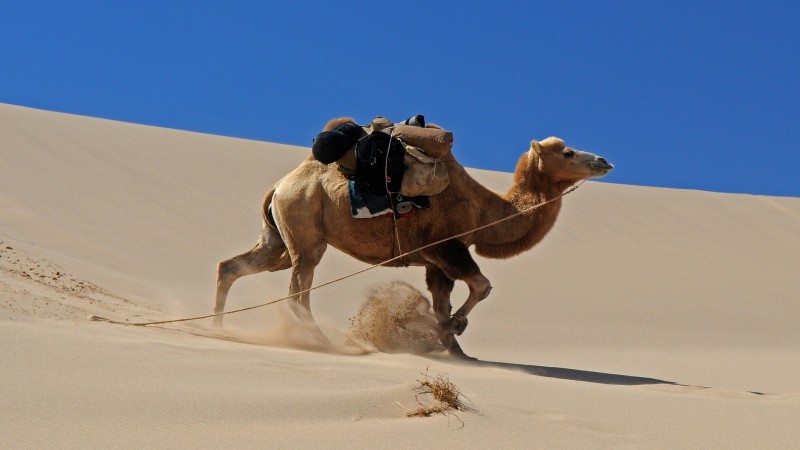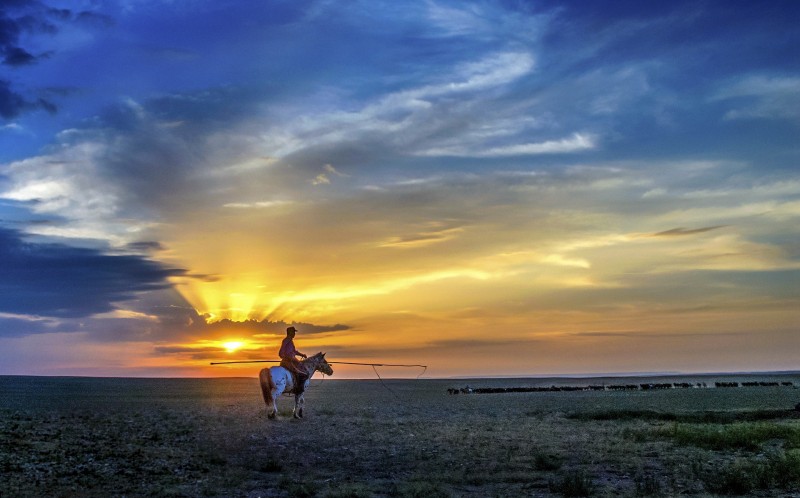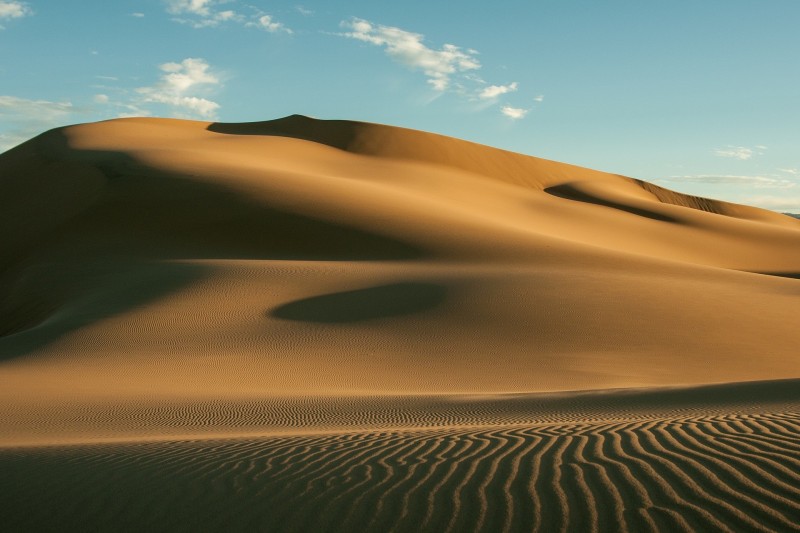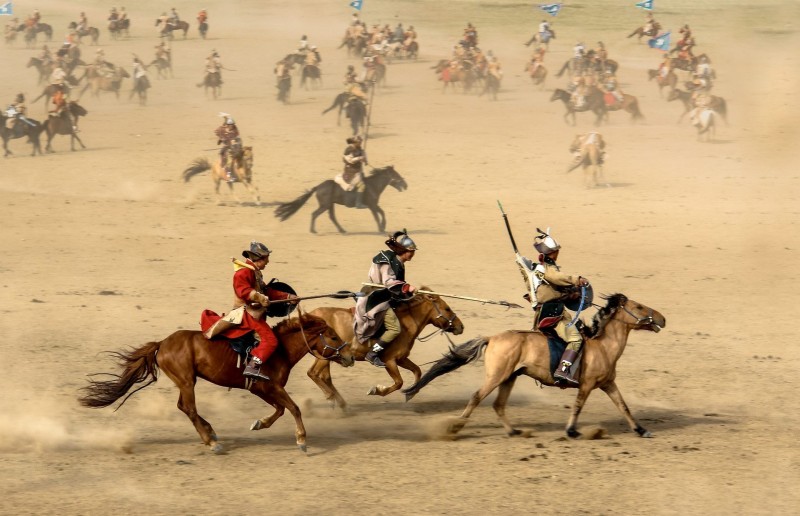Mongolia
Mongolia
Capital city description
Ulaanbaatar, the capital of Mongolia, is an enormous city characterized by a bohemian counter-culture, beating commerce, and thriving nightlife; the country's economic, cultural and political center possesses many tourist attractions and hosts the most varied types of entertainment.
The city is divided into nine districts and 122 khoroos. Ulaanbaatar is found on the bank of the Tuul River and is surrounded by four sacred mountains with dense pine forests on the northern slopes and grassy steppes on the south. Mainly described as sunny, peaceful, and open, Ulaanbaatar is a city of contrast where modern life comfortably blends with the traditional Mongolian lifestyle.
Climate
Mongolia's climate can be defined as a highly continental-dominated climate with warm summers and long, dry, and cold winters. Known as "the land of blue sky," Mongolia is a surprisingly sunny country and typically has about 250 sunny days a year. The average temperature in most of the country is below zero from November to March and close to it in April and October.
- Spring: March to May
- Summer: June to August
- Autumn: September to November
- Winter: December to February
Languages spoken
Mongolian is the official language of Mongolia and the most widely spoken in the country. About 5.2 million people speak Mongolian. Furthermore, The most popular foreign languages in Mongolia are English and Russian. English speakers have been increasing significantly in the past years. Other foreign languages used in the country include Chinese, Japanese, and German.
Fun/Fascinating Facts
- The Gobi Desert, where rock formations date back over 70 million years, has yielded the richest collection of dinosaur remains in the world. The area was made famous in the 1920s by the American explorer and paleontologist Roy Chapman Andrews, who discovered the first-known fossil dinosaur eggs.
- Mongolia hosts a yearly sporting event called the Naadam Festival. It is locally known as "the three games of men." These are archery, horse racing, and Mongolian wrestling. Although traditionally only men participated in these games, women also participate in horse racing and archery today. The Naadam Festival is held across the country in midsummer.
- Mongolia brags an extensive range of birds, fish, and mammals but is probably best known for the Siberian Ibex, Snow Leopard, Gobi Bear, Wild Bactrian Camel, and Przewalski's Horse.
- With Mongolia's large land area and small population, more than 500,000 square kilometers of land area are available for every person who lives in the country.
- Mongolians believe that if you see a shooting star, that indicates somebody is dying, so they whisper a prayer instead of making a wish.
Unique Customs/Traditions
- Mongolians are very conservative, religious, and traditionalistic; it is embarrassing to discuss homosexuality or see same-sex relationships. It's proper to avoid public displays of affection and save them for the privacy of your hotel or when you get home.
- Traditionally, It was rigorously forbidden to frighten a pregnant woman, make her unhappy, or do hard labor. It was also prohibited to pass a pregnant woman when walking, swear in her presence, or even speak in a loud voice. Such traditions came from the profound honor given to the unborn child, who might one day become an intellectual, a statesman, or just a faithful person to his family and community.
- Marriage has a distinct tradition in Mongolia; if a Mongolian woman and man want to get married, they need to choose a beneficial day in advance. The man needs to take some valuable things to the girls' house. If the girl's family is not satisfied, they won't allow them to marry that man. On the wedding day, the bridegroom and the groomsman should go to the bride's home to fetch the bride. Traditionally, he must take some green vegetables with him implying their love would be evergreen.
- One of the most colorful and authentic items of Mongolian national dress is traditional headwear. The Mongolian headdresses varied in shape and purpose; there were hats for the young and old, summer and winter, men and women, holidays and ceremonies & fashionable and everyday hats.
Popular universities
| Name | Description | |
|---|---|---|
| National University of Mongolia | The National University of Mongolia is a non-profit public higher education institution found in the metropolis of Ulaanbaatar. Founded in 1942 and officially recognized by the Mongolian National Council for Education Accreditation, the National University of Mongolia (NUM) offers courses and programs leading to officially recognized higher education degrees such as pre-bachelor degrees (i.e., certificates, diplomas, associate or foundation), bachelor's degrees, master's degrees, doctorate degrees in several areas of study. This institution also has branch campuses in the following locations: Erdenet, Zavkhan. | |
| Mongolian University of Science and Technology | Mongolian University of Science and Technology is a non-profit public higher education institution located in the urban setting of the metropolis of Ulaanbaatar. This institution also has branch campuses in the following locations: Erdenet, Darkhan, Arvaiheer, Baruun-Urt. Established in 1959 and officially recognized by the Mongolian National Council for Education Accreditation. Mongolian University of Science and Technology (MUST) offers courses and programs leading to officially recognized higher education degrees such as bachelor's degrees, master's degrees, doctorate degrees in several areas of study. | |
| Mongolian National University of Medical Sciences | Mongolian National University of Medical Sciences is a non-profit public higher education institution located in the metropolis of Ulaanbaatar. Established in 1942 and officially recognized by the Mongolian National Council for Education Accreditation, the Mongolian National University of Medical Sciences (MNUMS) is a coeducational Mongolian higher education institution. Mongolian National University of Medical Sciences (MNUMS) offers courses and programs leading to officially recognized higher education degrees such as pre-bachelor degrees (i.e., certificates, diplomas, associate or foundation), bachelor's degrees, master's degrees, doctorate degrees in several areas of study. This institution also has branch campuses in the following locations: Darkhan-Uul, Sainshand, Gobi-Altai. | |
| Mongolian State University of Education | Mongolian State University of Education is a non-profit public higher education institution located in the metropolis of Ulaanbaatar. Founded in 1951 and Officially recognized by the Mongolian National Council for Education Accreditation. Mongolian State University of Education (MSUE) offers courses and programs leading to officially recognized higher education degrees such as bachelor's degrees in several areas of study. | |
| Mongolian University of Life Sciences | Mongolian University of Life Sciences is a non-profit public higher education institution located in the metropolis of Ulaanbaatar. Established in 1958 and officially recognized by the Mongolian National Council for Education Accreditation. Mongolian University of Life Sciences (MULS) offers courses and programs leading to officially recognized higher education degrees such as bachelor's degrees, master's degrees, doctorate degrees in several areas of study. | |
| University of Finance and Economics | University of Finance and Economics is a private higher education institution located in the metropolis of Ulaanbaatar. Established in 1924 and officially recognized by the Mongolian National Council for Education Accreditation. University of Finance and Economics (UFE) offers courses and programs leading to officially recognized higher education degrees such as bachelor's degrees, master's degrees, doctorate degrees in several areas of study. | |
| Mongolia International University | Mongolia International University is a for-profit private higher education institution located in the metropolis of Ulaanbaatar. Established in 2002 and officially recognized by the Mongolian National Council for Education Accreditation. Mongolia International University (MIU) offers courses and programs leading to officially recognized higher education degrees such as bachelor's degrees, master's degrees in several areas of study. | |
| Khovd University | Khovd University is a non-profit public higher education institution found in the small city of Khovd. Established in 1979 and officially recognized by the Mongolian National Council for Education Accreditation. Khovd University (KhU) offers courses and programs leading to officially recognized higher education degrees such as bachelor's degrees, master's degrees, doctorate degrees in several areas of study. | |
| The International University of Ulaanbaatar | The International University of Ulaanbaatar is a private higher education institution located in the metropolis of Ulaanbaatar. Founded in 2002 and officially recognized by the Mongolian National Council for Education Accreditation. International University of Ulaanbaatar (IUBU) offers courses and programs leading to officially recognized higher education degrees in several areas of study. | |
| Mongolian National University of Arts and Culture | The Mongolian National University of Arts and Culture is a non-profit public higher education institution located in the metropolis of Ulaanbaatar, founded in 1990 and officially recognized by the Mongolian National Council for Education Accreditation. Mongolian National University of Arts and Culture (MNUAC) offers courses and programs leading to officially recognized higher education degrees such as bachelor's degrees in several areas of study. | |
Festivals & Events
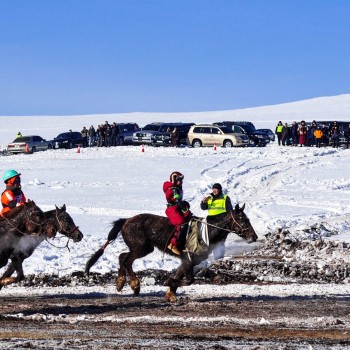
Naadam festival
Date: 11th-13th July
Naadam festival is a famous and national sports festival of horse races, wrestling, and archery. The festival is deemed the essential celebration among wrestlers, jockeys, and archery athletes—the national and regional festivals throughout the country, from small-town to the Ulaanbaatar city in July. Naadam means games in Mongolian.
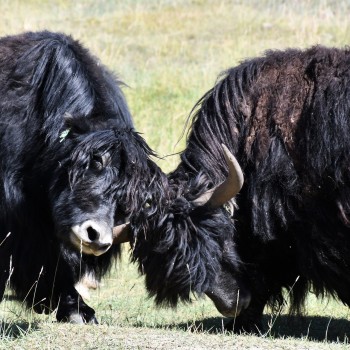
22nd July
Date: Yak Festival
The Yak Festival is one of the most prominent festivals in Mongolia and is held every year on July 22 in the Orkhon Valley of Uvurkhangai Province. Nomadic culture in the Khangai Mountains is sharp, and the area has one of the highest concentrations of yaks in the world.
The event covers yak racing and showing, wild stallion and yak riding, milking contests, and other traditional Naadam horse racing, wrestling, and archery events.
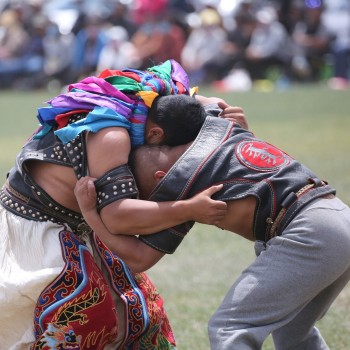
Danshig Naadam
Date: August or September
The hugest Mongolian religious festival is Danshig Naadam, first held in 1639 to enthrone the 1st Bogd Jebtsundamba Khutukhtu. Danshig Naadam religious festival has offered a variety of cultural performances, including traditional folk dance and song, contortion, wrestling, archery, knuckle-bone shooting, and religious competitions since 2015.

Orkhon Valley Horse Festival
Date: August
Orkhon Valley Horse Festival is a unique festival because of its popular Orkhon Valley-listed in the historical sites of UNESCO. This festival will be an excellent choice for those who want to experience the land of horse riding and challenging competitions among men and the capability and beauty of Mongolian horses. You can experience many cultural rituals and contests related to horse and horse riders activities, including lassoing a horse, grabbing a lasso pole from land while riding a horse, horse bucking, race of foal horses.
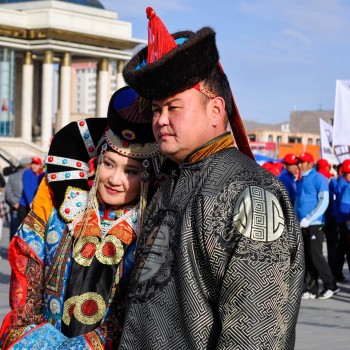
Ceremony of Gongor Bumba
Date: August
The festival of Gongor Bumba in Amarbaysgalant monastery is one of the most meaningful holidays for Mongolian Buddhists. This most extensive religious ritual will take place in August. Religious worshippers, followers, and lamas believe that the Gongor ingot ceremony brings abundant wealth and gathers once a year at Amarbayasgalant monastery. During the festival, there will be a tsam dance -worshipping ritual in the Amarbayasgalant monastery.
Attractions / Top Sights
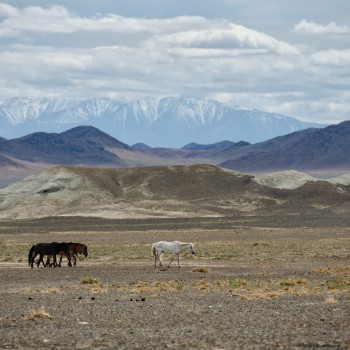
Altai Tavn Bogd National Park
When to visit: June to September
Located on the borders of Russia and China in western Mongolia, Altai Tavn Bogd National Park emphasizes five of the tallest mountain peaks in the country. The area is lush in natural wonders from glaciers to lakes to a 10-meter waterfall and archaeological sites, including the Mongolian Altai's UNESCO World Heritage Site Petroglyph Complexes.
The Altai Tavan Bogd National Park is the most visited in western Mongolia, with various activities. Mountain climbing is best during late summer when the weather is warmest. Four of the peaks require mountaineering equipment and experienced climbers, though the shortest, Malchin Uul ("Herder Peak") at 4025 M, can be hiked by novices. Near the mountains, it is possible to hike Pontuninii Glacier.
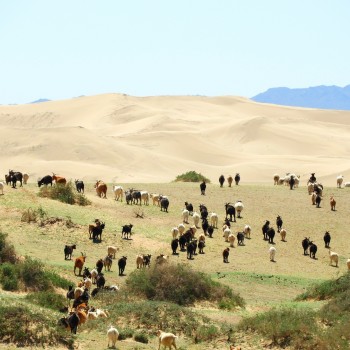
Gurvan Saikhn National Park
When to visit: June to September
Gurvan Saikhn National Park is the hugest national park in Mongolia. It covers 2,697,171 hectares of the 9 soum of Umnugovi province and Bayankhongor province in southwest Mongolia. The National Park was first built in 1993 and expanded to the current size later, where all the protected areas surround the Gurvan Saikhan Mountain range (Three Beauties of Gobi).
The national park presents the best attractions, including Bayanzag Flaming cliffs, Khongor dune, Khavstgait rock paintings, and Yol valley – Ice gorge. The clay from the former shores, hills, and soil of the Cretaceous period look like they are on fire during sunrise and sunset.
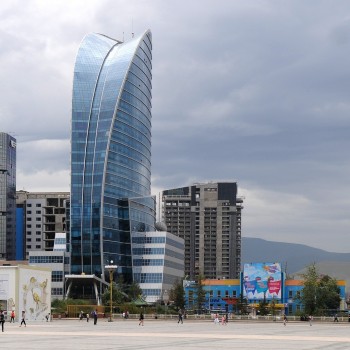
Ulaanbaatar
When to visit: May to September
Ulaanbaatar is the capital of Mongolia, with approximately 1.3 million residents, being the biggest city in Mongolia, standing as its political, commercial, industrial, and cultural hub.
Ulaanbaatar is a captivating city that combines old and new beautifully. Visitors will find a vibrant city brimming with modern buildings, shopping, art, a thriving nightlife scene, and restaurants, a contemporary contrast to the timelessness of the country’s vast spectacle outside it.
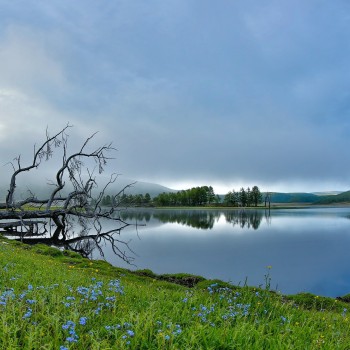
Khovsgol Lake
When to visit: June to September
Khovsgol Lake, commonly named ‘the younger sister,’ to the famed Lake Baikal that lies around 200 kilometers to its northeast in Russia, is one of the largest lakes in Mongolia, Khövsgöl. Encompassed by a glorious national park of the same name, home to many towering mountains and sweeping valleys, Khövsgöl Lake is set in a fantastic location.
Though the waters are relatively poor in fish and marine life, Khövsgöl Lake exceptionally contains almost 70 percent of the country’s freshwater and was formed over two million years ago.
.jpg)
Erdene Zuu
When to visit: May to September
Mongolia's first and oldest Buddhist monastery, Erdene Zuu, is located in Ovorkhangai, about 2 kilometers (1,2 miles) Northeast Kharkhorin; founded in 1586 by Altai Khaan. Listed on the UNESCO World Heritage List in the category of "cultural landscape of Orkhon Valley."
The monastery went through times of chaos and victory until finally, the Stalinist purges of 1937 were entirely out of business. It remained closed until 1965 and was permitted to reopen as a museum but not as a place of worship. In 1990, religious freedom was restored, and the monastery became active again.
.jpg)
Gorkhi-Terelj National Park
When to visit: May to September
Gorkhi-Terelj National Park is a natural reserve and outdoor adventurers’ paradise located in the northeast of Ulaanbaatar. Gorkhi-Terelj National Park’s alpine scenery is incredible. It is one of the most recommended places to visit in Mongolia; its majestic mountain peaks are home to picturesque valleys, roaring rivers, and craggy rock formations charming yurt camps found here and there.
A plethora of great outdoor activities such as hiking, rock climbing, and river rafting are popular pastimes visitors would enjoy.
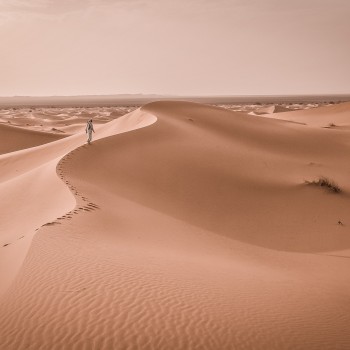
Gobi Desert
When to visit: June to September
When to visit: https://www.britannica.com/place/Gobi
The Gobi Desert, the second largest desert in Asia and the fifth largest globally, develops into modern-day China and Mongolia, expanding its harsh, rocky terrain over 500,000 square miles. It is a striking sight and a significant distinction from most other parts of Mongolia.
The harsh, unforgiving climes of the endless Gobi Desert certainly aren't for the faint-hearted; that's what makes them so exciting to explore. With endless dunes, ancient rock formations, and desolate desert stretching out before you, venturing into the Gobi Desert is the adventure of a lifetime.
















